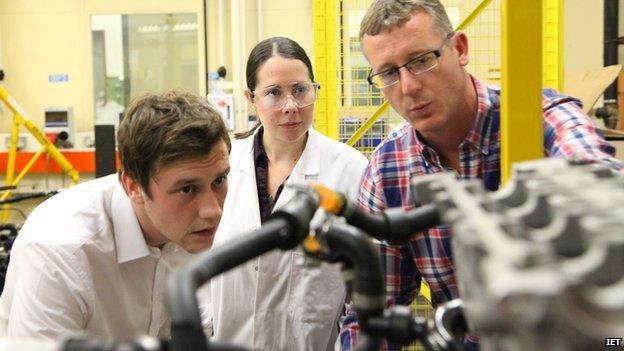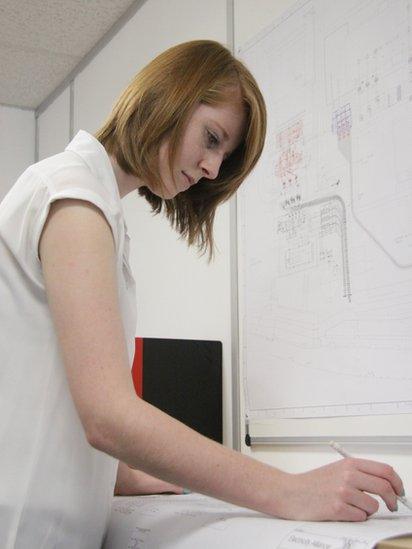'Embrace engineering's creative side' to fix skills crisis
- Published

Embracing the arts can help with new products, says Sir John O'Reilly
Engineering needs to emphasise its creative side to encourage more young people to take it up as a career, says a leading member of the profession.
Engineers should embrace the arts, Sir John O'Reilly, a fellow of the Institution of Engineering and Technology, argued in a lecture.
About 59% of engineering companies in the IET's 2014 survey feared skill shortages could threaten business.
"There is nothing as creative as engineering," Sir John told BBC News.
He says science, technology, engineering and mathematics - often known as "Stem" subjects, are vital for a modern knowledge economy.
But there is a massive shortfall in the number of recruits - with a recent study by the Royal Academy of Engineering saying the UK needs to increase by as much as 50% the number of Stem graduates it produces.
Competitiveness
Delivering this year's Mountbatten Lecture at the Royal Institution, Sir John argued that engineers should recognise the role of the arts in their work - among other benefits, this could attract more people into the profession.
The lecture, Full Steam Ahead for Growth, advocated adoption of a wider acronym - Steam, or science, technology, engineering, arts and maths.
Engineers should embrace the arts as being key to creativity and an important component of innovation, crucial to creating new products and boosting future competitiveness, he argued.
"Engineering and technology is an increasingly diverse and creative domain," said Sir John.
Some university engineering departments already collaborated with art schools to develop understanding, he told BBC News.
In particular he mentioned Cranfield University's Centre for Creative Competitive Design , externaland Imperial College's work with the Royal College of Art.

Engineering is keen to widen the pool of recruits to the profession
The two sets of people could work well together and more emphasis on the creative side of engineering could improve the success of products, he said.
"Aesthetics is part of it," he told BBC News, adding that Apple's iPod was not the first digital media player, nor the only one that worked - but it came to dominate the market "because it was nice to have".
Sir John said he was not suggesting universities started requiring A-level art from engineering applicants - the key subjects for admission would continue to be maths and the sciences. But an emphasis on creative skills would help "broaden the pool and attract more people in".
The IET's skills survey raised concerns not only about the number of recruits to engineering, but about the diversity of the workforce, with only 6% being women.
A report last week by the Wise campaign to promote women in science and engineering found too many young women felt engineering was "not for people like me". , external
Wise director Helen Wollaston commented: "People who are creative and imaginative are good at working out how to improve products, making them more useful and attractive to customers.
"Advertising for people with these characteristics would be a good way to attract more girls and women into science, technology and engineering."
National Union of Teachers general secretary Christine Blower said Sir John's comments illustrated the educational importance of arts subjects "to ensure students have a range of skills and knowledge to equip them for their future careers".
- Published21 November 2014

- Published4 November 2013

- Published1 October 2012
